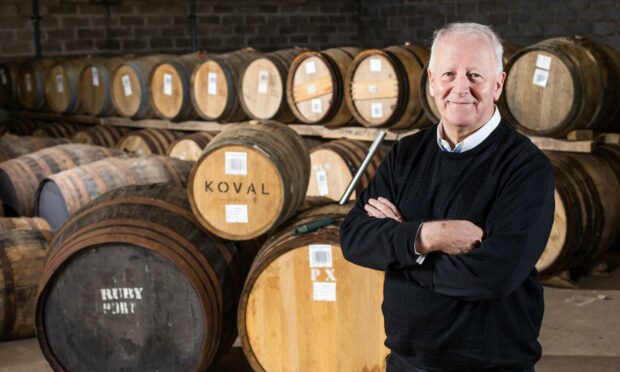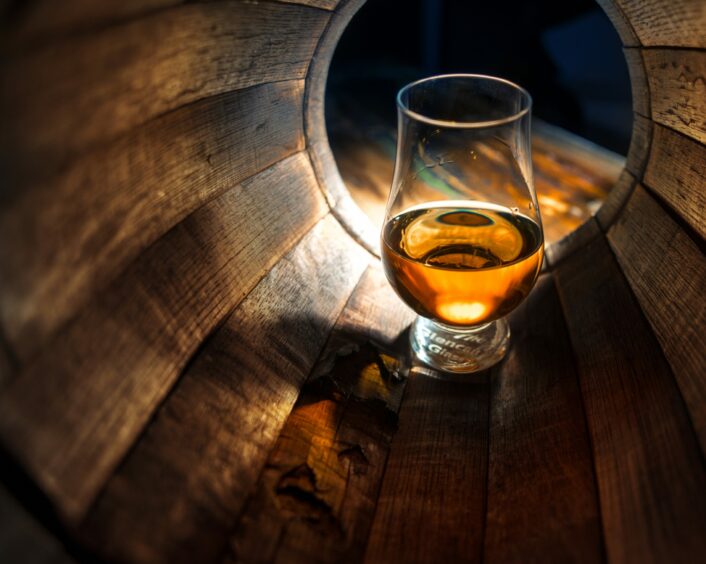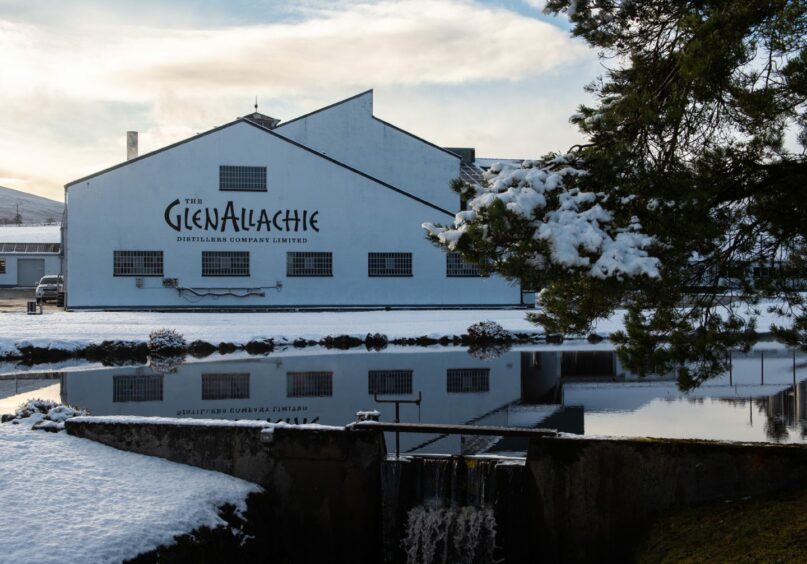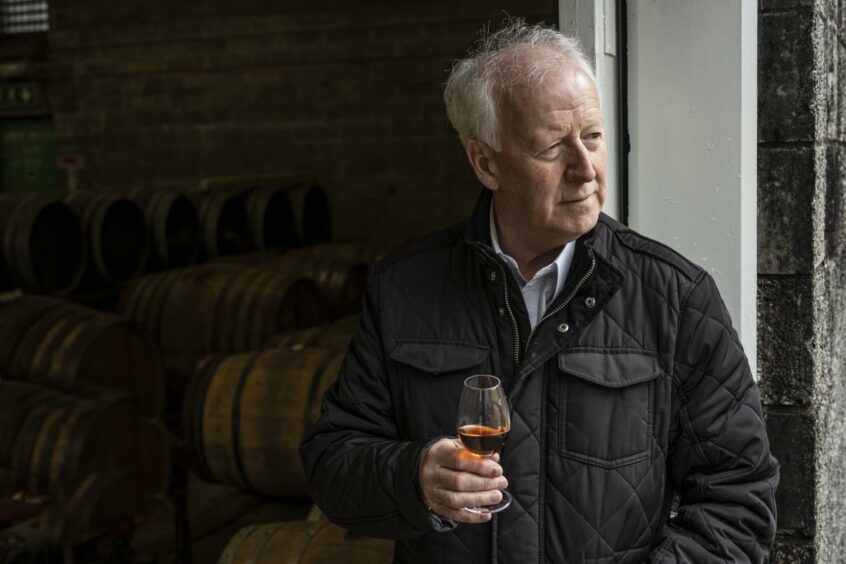Peter Ranscombe finds out why mergers and acquisitions represent a game of two halves for the Scotch whisky market.
Mergers and acquisitions (M&A) within the drink industry can be as “dramatic as the transfer of footballers, with clubs swapping and trading celebrity players”.
That is according to Matthew Pauley, assistant professor at the famous International Centre for Brewing and Distilling at Heriot-Watt University in Edinburgh.
Mr Pauley is also the founder of consultancy firm Distiller’s Nose.
To build on his football analogy, whisky’s league structure has changed over the past 20 years.
And just like football clubs, distilleries require deep pockets.
The current energy crises will only increase the difference between the large players and the small independent operators.”
Matthew Pauley, of the International Centre for Brewing and Distilling.
Spirit must age for at least three years before it can be labelled as “Scotch whisky”, with the liquid often left slumbering for 10 or 12 years, or longer.
Tying up cash in stock for so long creates financial pressure and was for many years a high barrier to entry for new players.
Yet smaller distilleries have sprung up throughout Scotland during the past decade, with these lower-division and Sunday-league teams aiming to build a strong fanbase and enjoy a long cup run.
Smaller distilleries have less time pressure so can distil slower, meaning their spirit often needs only a handful of years in oak to soften its harsh edges, rather than a decade or more.
Other small players turned to gin – which can be made one day and sold the next, without ageing – to aid cash flow.
Experts now believe Scotland’s new-wave distilleries could be takeover targets.
Mr Pauley highlighted the various forms M&A activity can take in the drink sector, ranging from individual brands or distilleries changing hands through to full-scale takeovers.
“Normally, things start off with a certain amount of brand ‘horse trading’, with very occasional and sporadic larger companies being bought and sold,” he explained.
Rising fuel oil and gas prices could trigger a wave of M&A involving Scotland’s drink industry.
Mr Pauley said: “The current energy crises will only increase the difference between the large players and the small independent operators.
“In a surprisingly short amount of time there could, sadly, be a large number of small brands that will be available for acquisition.
“The established players with the deepest pockets will always have the biggest influence within M&A.”
Another player who knows a thing or two about M&A in the Scotch whisky market is Billy Walker, master distiller at GlenAllachie, near Aberlour.
Mr Walker was operations director at stock market-listed Burn Stewart when it was taken over, in 2002, by CL Financial, the Caribbean-based owner of Angostura Bitters.
Burn Stewart’s £49 million sale price and his 3% stake triggered a payday for Mr Walker.
He went on to buy the mothballed BenRiach distillery, south of Elgin, in 2004 from Chivas Brothers for £5m, alongside South African investors Geoff Bell and Wayne Kieswetter.
The trio then bought GlenDronach distillery, in Aberdeenshire, four years later and a bottling plant at Newbridge on the outskirts of Edinburgh – again both from Pernod Ricard-owned Chivas – before adding Glenglassaugh distillery, on the Banffshire coast, in 2013.
International drink giant came calling
Building up that business put Mr Walker on the other side of the M&A table when Brown-Forman – the US giant behind brands including Jack Daniel’s whiskey, Finlandia vodka and Chambord liqueur – came calling in 2016, buying BenRiach Distillery Company for £285m.
But that wasn’t the end of the story for the veteran whisky entrepreneur, who bought GlenAllachie in 2017 – again from Chivas.
Having dealt with international investors on both sides of the table, Mr Walker is well-placed to judge the mood of the market.
“Scotland – and, more specifically, the Scotch whisky sector – is very attractive to overseas buyers, and I am sure this will see activity over the next 12 months,” he said.
He believes M&A deals are more likely to favour acquisitions, with larger companies eyeing smaller businesses.
“It is difficult for the smaller distilleries to come together but I am sure there will already be a growing interest from the bigger players,” he added.
Deals are already being struck further south – last month (January) Edinburgh-based private equity firm Inverleith took a majority stake in Eden Mill, the gin and whisky distillery in Guardbridge, near St Andrews in Fife.
Inverleith bought the Scotch Malt Whisky Society from Glenmorangie-owner LVMH in 2015, before floating it on the Alternative Investment Market last year.
More deals on the way
Alan Hamilton, corporate finance director at Aberdeen-based accountancy firm Johnston Carmichael, which advised Eden Mill on the deal, said: “We have a number of live M&A spirits projects under way.
“We have been involved in recent discussions with potential buyers where they have looked to acquire specific brands and product ranges from a client’s portfolio, as well as situations where clients have looked to dispose of non-core product ranges to raise capital to support growth in the main part of their business.
“There are obviously a number of distilleries, both established and relatively new, across the north of Scotland that could be attractive to investors.”
Mr Hamilton added: “There is a wide range of potential buyers out there – we are seeing substantial activity across trade players looking to expand their product range and access wider distribution networks, together with high-net-worth (HNW) investors with an interest in investing into young or even new distillery projects.
“Many debt providers like whisky as an asset as it typically increases in value over time.
“We are seeing significant interest in the sector from a wider range of banks looking to provide debt facilities secured against whisky stocks.
“In the main, these types of facilities are used to support growth in whisky stocks.
“But if there is sufficient headroom in the assets of the business, this is certainly a way to look to facilitate a management buyout and allow shareholders to take some money off the table.”
Brian Moore – a partner at law firm Dentons, who has advised Macallan owner Edrington on transactions, and helped raise funds to build Lindores Abbey and Nc’nean distilleries – agreed whisky investments appeal to HNW individuals.
Mr Moore added: “Lots of insurance firms have invested in wine chateaux in Bordeaux over the decades because they’re a good long-term yielding asset class.
“I wonder if whisky would also be attuned to that from an insurance investor’s perspective?”
Why are a growing number of investors turning to drink? There’s a dram good reason






